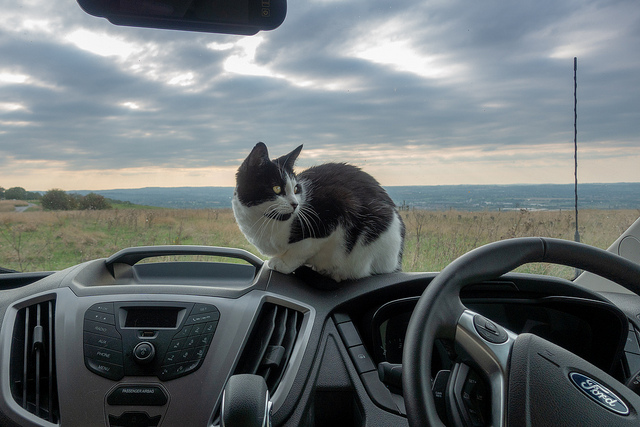While this may not be the time of year for traveling the countryside in your car, it will come sooner rather than later, and you’ll have to answer a crucial question—should you bring your cat along for the ride? In the end, this largely depends on your particular feline—your cat may have had few negative experiences and therefore won’t mind it that much, or your cat may have enough early bad memories—becoming nauseous or getting poked and prodded at the vet—that they can only think of the car as a scary place. Traveling by car with an animal can be stressful or even dangerous if done wrong, so be sure to adhere to our simple tips below.
Use a Carrier
It’s safer for everyone involved if your cat is inside a certified cat carrier while traveling. Loose pets are just furry projectiles during accidents, and a driver’s attention must be on traffic and the road rather than the cat in their lap. In this case, your cat should already be crate-trained prior to you hitting the open road and keep the crate in the backseat to protect them from the airbag—just as you would with a baby.
Create Positive Associations
Though your cat will be in a carrier, it’s best for them to make positive associations about your car before the engine even starts. Cats are especially sensitive to territory and environment—hence why they prefer being at home in their familiar surroundings—so you should make your vehicle familiar to your cat by allowing them to rub their scent everywhere and claim it as personal territory. You can also place a blanket, bed, or anything your cat sleeps on in the back to make them more relaxed during traveling.
Sit in the Car with Your Cat
Before going anywhere, bring your cat with you into your vehicle, shut the door lightly, and let them sniff the car and explore—though be watchful of young kittens in case they try to squirm into small spaces under your dashboard. You should probably only need five minutes for this process and be quick about getting your cat back to familiar surroundings if they get overwhelmed. Look for fluffed up fur, pinned ears, vocalizations, or an active tail. Repeat these quick car visits a few times per day several days in a row, extending each time when the cat remains calm.
Combine Visits and Crate Training
You can try combining your car visits with crate training after the cat accepts your car as their territory. Place the cat in the carrier, place it on your backseat, and start your vehicle. From there, turn the motor off and exit the vehicle without you going anywhere. Repeat this process three to four times throughout the day till your cat sees this as routine. Every time, be sure to give them a lot of playing and other rewards after releasing your feline friend from a crate.
Looking for more driving tips? Follow us on Facebook for updates on our blog. If you are in need of behind the wheel training in New Jersey for a new teen driver, click here.
Photo Courtesy of Kent Wang via Creative Commons License

